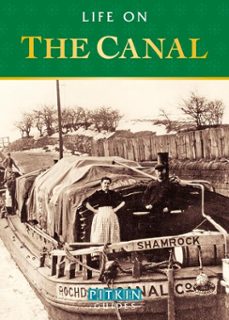Imprescindibles
Más vendidos Libros más leídos eBooks más leídos Todos los libros Todos los libros Autores destacados Series y sagas
Recomendados Libros recomendados Autores destacados Libros que inspiran Vidas con historia LGTBIQ+ English books
Ficción
Literatura Contemporánea Estudios literarios Clásicos Cuentos Poesía Teatro Libros de bolsillo Sagas literarias
Géneros literarios Novela romántica y erótica Novela negra Novela histórica Narrativa fantástica Novela de ciencia ficción Novela de terror Narrativa de humor Narrativa de viajes
No Ficción
Ciencias y tecnología Biología Ciencias Ciencias naturales Divulgación científica Informática Ingeniería Matemáticas Medicina Salud y dietas Formación Idiomas Estilo de vida Libros de Cocina Guías de viaje Narrativa de viajes Deportes Libros de Juegos Manualidades
Humanidades Autoayuda y espiritualidad Ciencias humanas Derecho Economía y Empresa Psicología y Pedagogía Filosofía Sociología Filología Biblioteconomía Estudios filológicos Estudios lingüísticos Estudios literarios Historia y crítica de la Literatura
Infantil
Juvenil
#Jóvenes lectores Narrativa juvenil Clásicos adaptados Libros Wattpad Libros Booktok Libros de influencers Libros de Youtubers Libros Spicy Juveniles Libros LGTBIQ+ Temas sociales Libros ciencia ficción Libros de acción y aventura Cómic y Manga Juvenil Cómic Juvenil Manga Shonen Manga Shojo Autores destacados Jennifer L. Armentrout Eloy Moreno Nerea Llanes Hannah Nicole Maehrer
Libros de fantasía Cozy Fantasy Dark academia Hadas y Fae Romantasy Royal Fantasy Urban Fantasy Vampiros y hombres lobo Otros Misterio y terror Cozy mistery Policiaca Spooky Terror Thriller y suspense Otros
Libros románticos y de amor Dark Romance Clean Romance Cowboy Romance Mafia y amor Romance dramatico Romance dramatico Romcom Sport Romance Otros Clichés Enemies to Lovers Friends to Lovers Hermanastros Slow Burn Fake Dating Triángulo amoroso
Cómic y Manga
Novela gráfica Novela gráfica americana Novela gráfica europea Novela gráfica de otros países Personajes, series y sagas Series y sagas Star Wars Superhéroes Cómics DC Cómics Marvel Cómics otros superhéroes Cómics Valiant
eBooks
Literatura Contemporánea Narrativa fantástica Novela de ciencia ficción Novela de terror Novela histórica Novela negra Novela romántica y erótica Juvenil Más de 13 años Más de 15 años Infantil eBooks infantiles
Humanidades Autoayuda y espiritualidad Ciencias humanas Economía y Empresa Psicología y Pedagogía Filosofía Historia Historia de España Historia Universal Arte Cine Música Historia del arte
Ciencia y tecnología Ciencias naturales Divulgación científica Medicina Salud y dietas Filología Estudios lingüísticos Estudios literarios Historia y crítica de la Literatura Estilo de vida Cocina Guías de viaje Ocio y deportes
Preventa de ebooks de ingeniería
Filtros
Del 1 al 6 de 6
Pitkin 9780752491837
For centuries it was far more efficient to move goods by water than by road. The end of the 18th century saw 2,000 miles of canal built in Britain: the Canal Age had begun.Constructing the canals consisted of a great deal of hard work and manual labour, headlines by individual names but mostly done by tens of thousands of men across Britain called navvies. Initially much like carting on roads, boating on canals grew as canal systems expanded across the country, but still required long hours, hard work and specific skills.This detailed and informative guide tells the story of the boats and their workers. From the professional leggers who walked boats through tunnels to lock keepers to canal children running ahead of the boats, original photographs and artefacts such as tug tickets and timetables show what life was like on the canal.A classic Pitkin guide to immerse readers in the world of canals in Britain, including a list of museums and heritage centres to provide further insight into the history of the canal network.
Ver más
eBook
PAVLISCAK, PAMELA
Elliott & Thompson 9781783967995
The existential toolkit for readers to regain control of their emotional lives in the digital age.
Ver más
eBook
TAYLOR, HARRY
The History Press 9781837050543
One day I will look back and laugh, but not just yet. Harrys life had been stuck in neutral until he discovered Peggy lying in a field. It then promptly went into reverse. Is Peggy the romantic interest of this story or two tons of automotive scrap metal?Harrys subsequent restoration project takes us on a journey through a life that has more bumps than the A12 and a cast of eccentric characters who are caught up in the joy of attempting the impossible, just for the sheer love of it.This is the story of one mans attempt to restore an Austin 1100. Along the way it also becomes the story of one mans attempt to restore himself, and as anyone whos ever tried their hand at restoration knows, you cant rebuild something without taking it apart first.This book is for anyone who wants to follow their dream but has forgotten to take out breakdown insurance for it.
Ver más
eBook
E. RATCHFORD, MELINDA
The History Press 9781803997834
Titanic represents a microcosm of the world in 1912. It was a mans world in many respects, across law, land ownership, voting rights, family structures and religious hierarchies. The stories we know about those involved that fateful night are as varied as the people aboard the ship, but many of them revolve around the roles and actions of the men.This new book from Melinda Ratchford delves into the world as it was for women in 1912, and presents a selection of womens stories, including a variety of women who travelled aboard Titanic, from rich to poor, and well-known to largely forgotten, and also stories of some women who didnt travel but whose lives were inextricably linked to the tragedy and changed forever. This collection of stories presents the lives of these women before, during and after the tragedy that irrevocably changed their world, and ours.
Ver más
eBook
The History Press 9781837051496
The original Land Rover evolved for almost seventy years, from the ground breaking Series I model in 1948 to the final Defender in 2016. Now there is a totally new Defender for the 2020s. Land Rover charts the history of the authentic bloodline in striking, carefully compiled and, in some instances, very rare photographs. It presents the memorable mileposts and bizarre diversions in an astonishingly long life. This is a rich visual tribute to the genius and guts of these legendary vehicles.
Ver más
eBook
WALTON, PAUL
The Crowood Press 9780719845567
With a heritage that harks back to the early Twenties, Jaguar is one of UKs oldest automobile marques still in business. As well being famous for several iconic sports cars such as the XK120, E-type and XK8 along with its many successes in international motorsport, it also has a reputation for producing elegant, luxurious and powerful saloons. These have included the Mk VII, Mk 2 and Mk X, plus eight generations of XJ, all of which set a new standard for their performance, ride and comfort.Launched in 1986, the fourth XJ model internally known by Jaguar as the XJ40 not only had a new and more modern design than its more traditional predecessors but also featured an innovative, and at the time class-leading, specification that included a clever onboard diagnostic system. However, never a car without issues the XJ40s gestation alone took well over a decade its many reliability issues would have a long lasting impact on both its reputation as well as Jaguar itself.
Ver más
eBook
Del 1 al 6 de 6
































